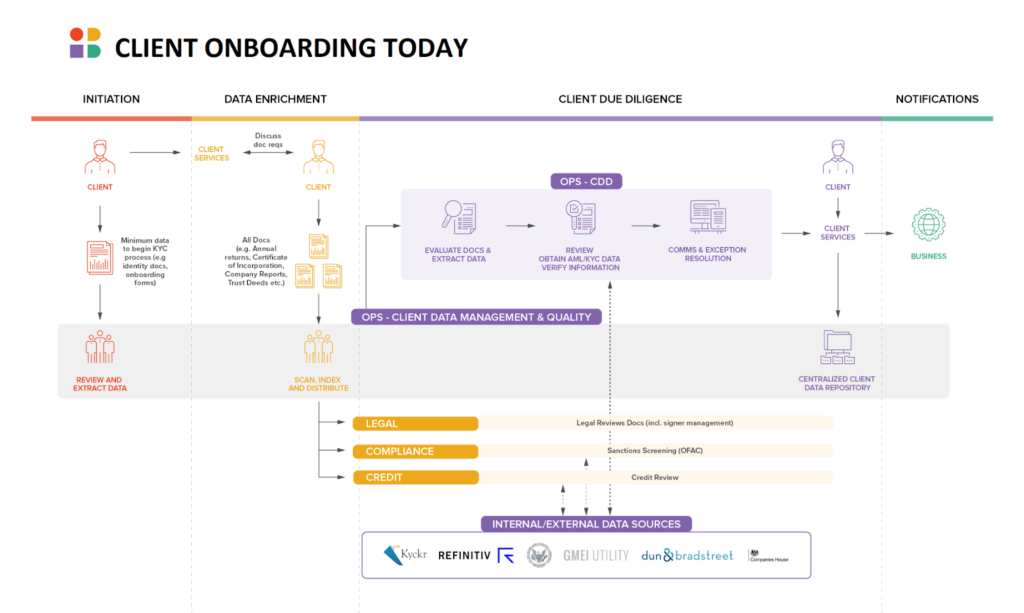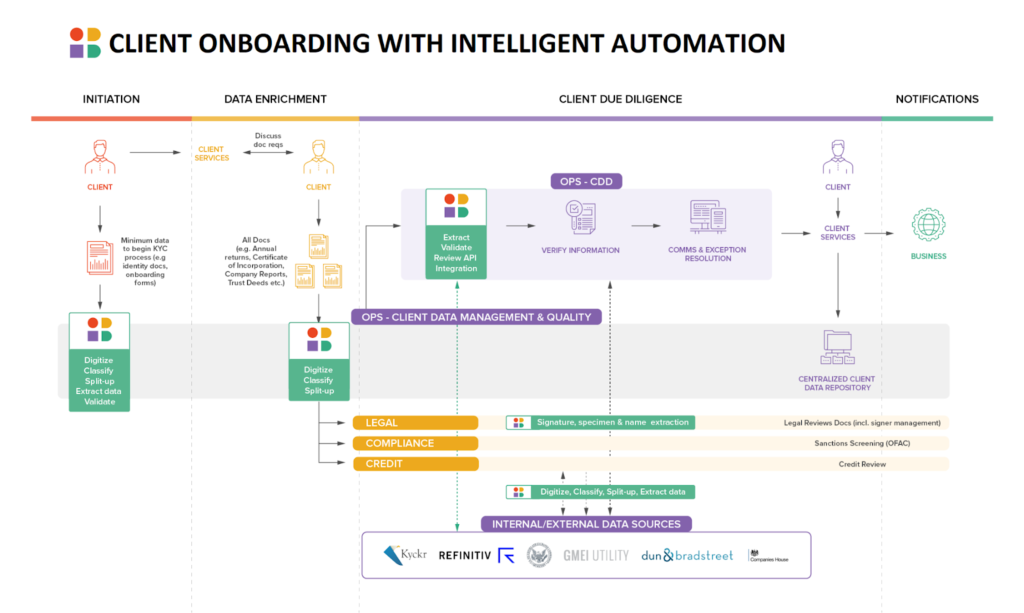Client onboarding can represent an exciting time for a financial institution. A new customer means an expanding book of business, a contribution to organization-wide financial stability, and the possibility of interesting new work. On the logistical side of things, however, onboarding clients can present significant documentation and compliance challenges.
Many banks employ teams of professionals whose sole job function is ensuring the organization’s compliance with various laws, including complicated and numerous Anti-Money Laundering (AML) and Know Your Client (KYC) rules. Adding full-time workers to AML/KYC compliance teams as demand increases is not a sustainable solution for all financial organizations, as it’s both costly and time-consuming.
How can a bank maintain necessary compliance in the area of client onboarding, without stretching their resources to the limit? Simply put, the answer lies in leveraging intelligent automation and document understanding software.

Document Understanding Reduces Manual Processing
To comply with stringent KYC/AML regulations and uphold internal company compliance policies, financial institutions must thoroughly vet potential new clients before conducting business with them. This process is document-intensive and includes the review of documentation pertaining to company ownership, board members, key leadership, trading history, and more. Various records, both public and internal, must be reviewed to root out any possible violations, illegalities, or conflicts that could occur. All this takes considerable time when reviewed manually, owing to the documents’ various formats and complexity.
“These documents come through, often in dribs and drabs, sometimes through a front-end portal but often not, and the financial institution must make sure the right documents are received and reviewed,” Tom McCann, of Instabase, said. “Then, often, bank employees are doing some sort of reconciliation between the information contained in onboarding forms, through the online portal, and from the actual documents.”
Rather than bogging down human workers with the task of manually reviewing, reconciling, and analyzing these documents, banks now have the option to turn instead to a platform such as Instabase. Instabase solutions “can automatically identify whether the right documents have been submitted in the first place, which is often a big pain point” for banks during the client-onboarding process, McCann noted.
Using technologies such as natural language processing, optical character recognition, and deep learning capabilities, Instabase’s platform can substantially reduce the need for manual processing, thereby freeing up employees for more productive work. It can also easily and quickly extract data from documentation in any format, turning everything that’s entered into useful, structured data usable by the financial institution’s existing systems.

Intelligent Automation Enriches the Data
As it stands, many banks are struggling to do the “minimum” when it comes to AML-related risk assessment, Toby Burton, Business Value Consultant for Instabase, said. But they could be doing much more, and with less effort — which could mean a fuller, more accurate picture of the potential risks they face in onboarding a specific client.
“There’s a treasure trove of information that’s basically left untouched within all these documents because many financial institutions just don’t have the resources and the time to get all that richness of data,” Burton said. Using a document understanding software during the onboarding process, on the other hand, enriches the data, “which is going to reduce the overall business risk,” Burton noted.
Intelligent Automation Saves Money
Not only is painstaking, manual document review and information extraction an error-prone time-eater, but it is also incredibly expensive. Having employees do the work of splitting up and classifying large document packets, then validating the data and keying it in means a company is essentially paying salaries and benefits for efforts that could be undertaken by a machine. Why not spend that outlay instead on work that only humans can do, such as innovation, which drives industry in the first place? By implementing an intelligent automation solution for client onboarding, financial institutions can do just that.
Document Understanding Software Enables Client Growth
The speed and accuracy of a high-quality intelligent automation solution, such as the Instabase platform, allows financial institutions to onboard new clients much more quickly — so they can take on more new customers in less time and better serve both potential and existing clientele.
With manual KYC/AML compliance processes, a bank is constrained in its growth by high costs and limited capacities and resources. By replacing manual processes with Instabase’s solution, a financial organization frees up time and capital, allowing it to keep existing clients happier. That, in turn, leads to lower attrition rates and more referrals. And that means more business.
Accelerate compliant client onboarding.
Leverage Instabase document understanding to speed onboarding processes.



